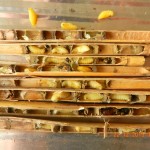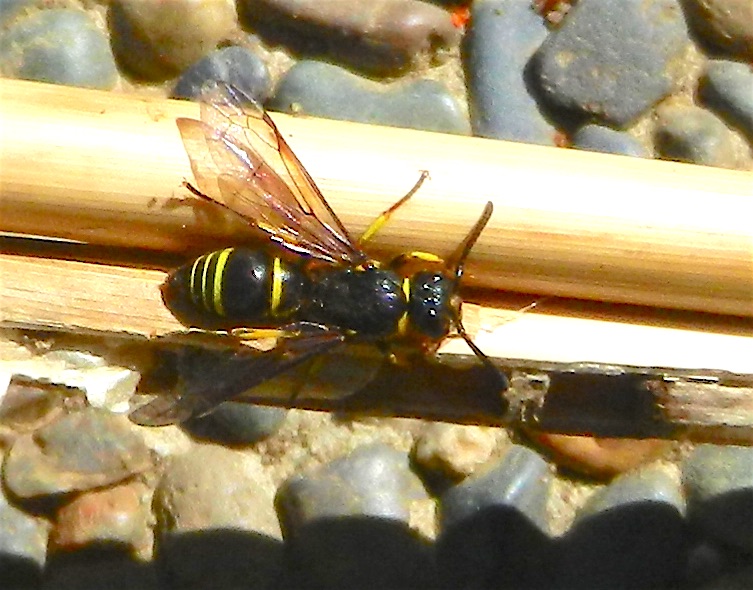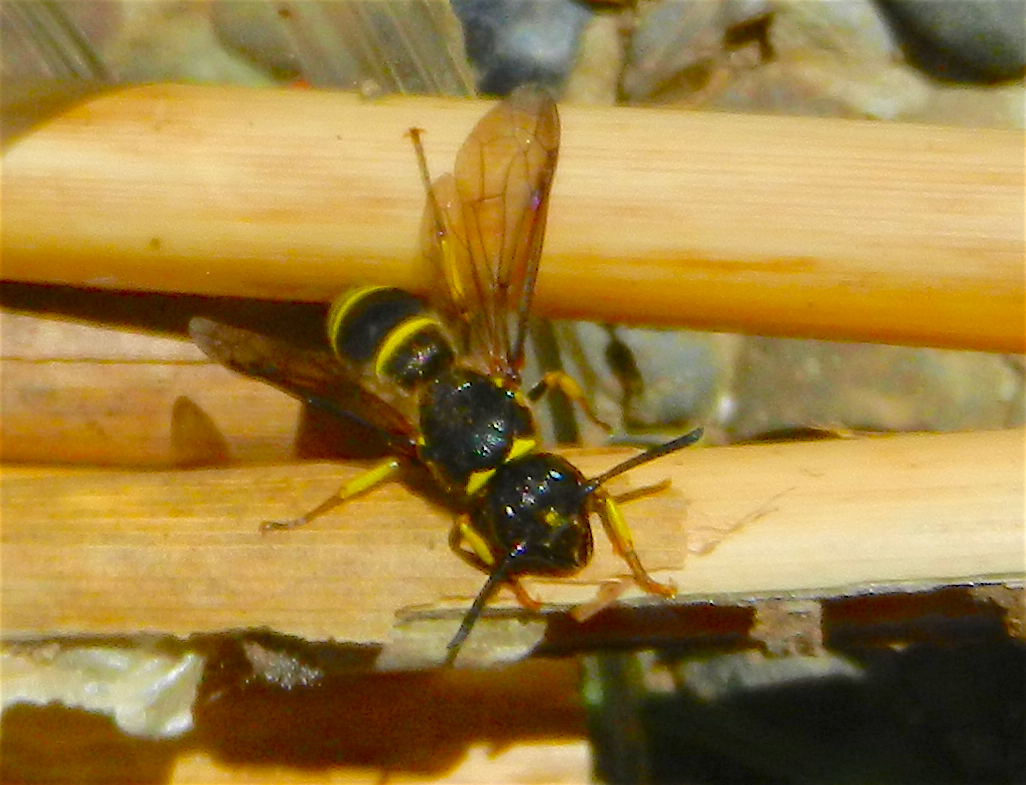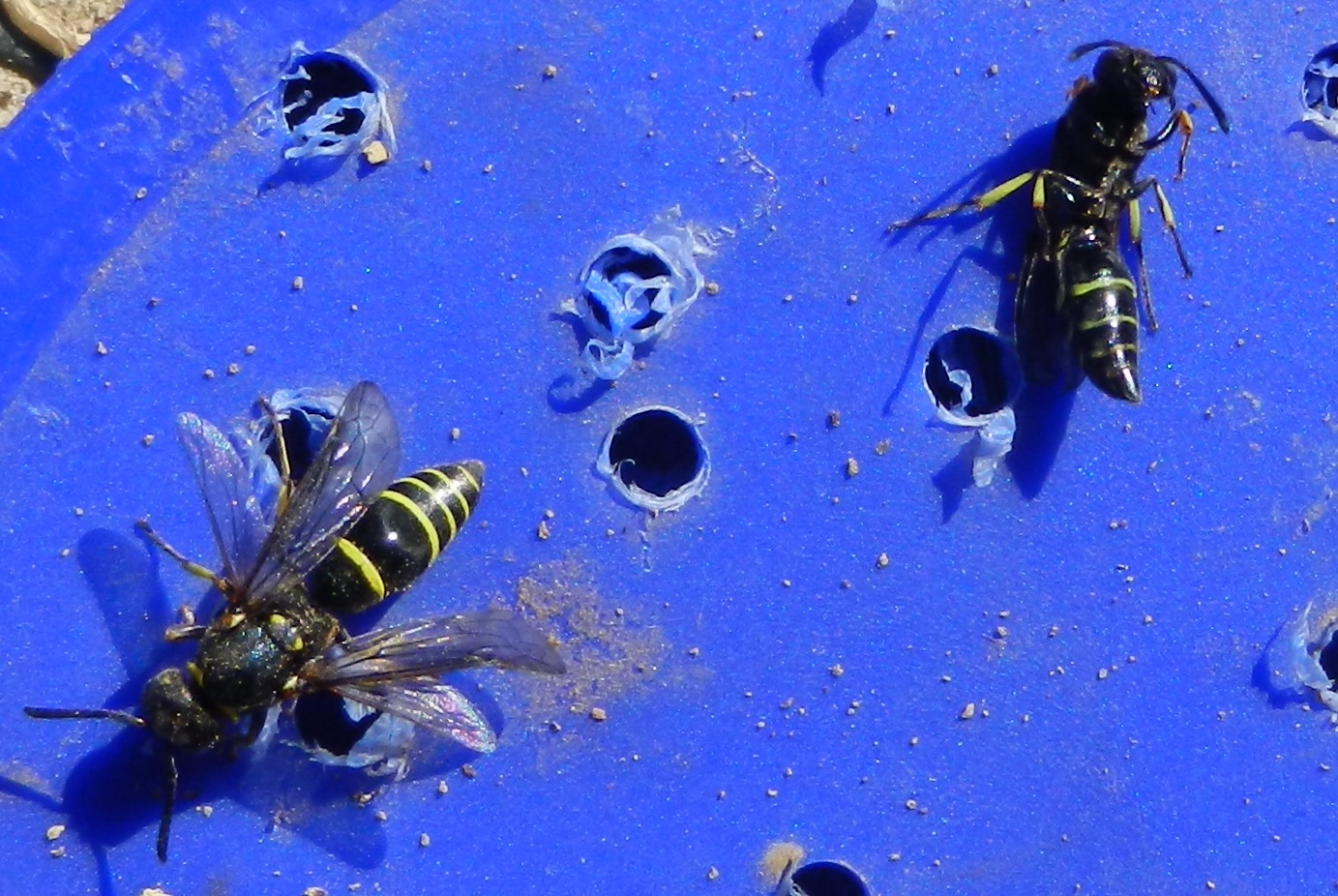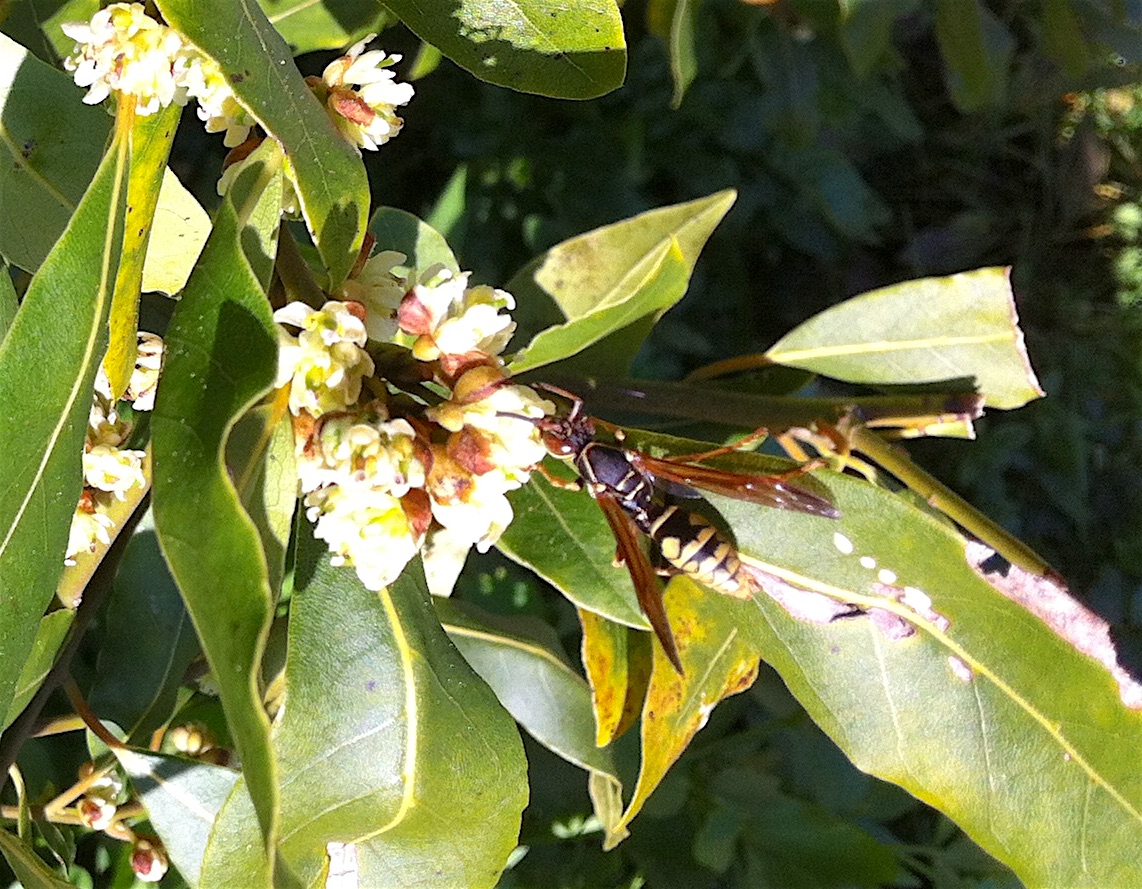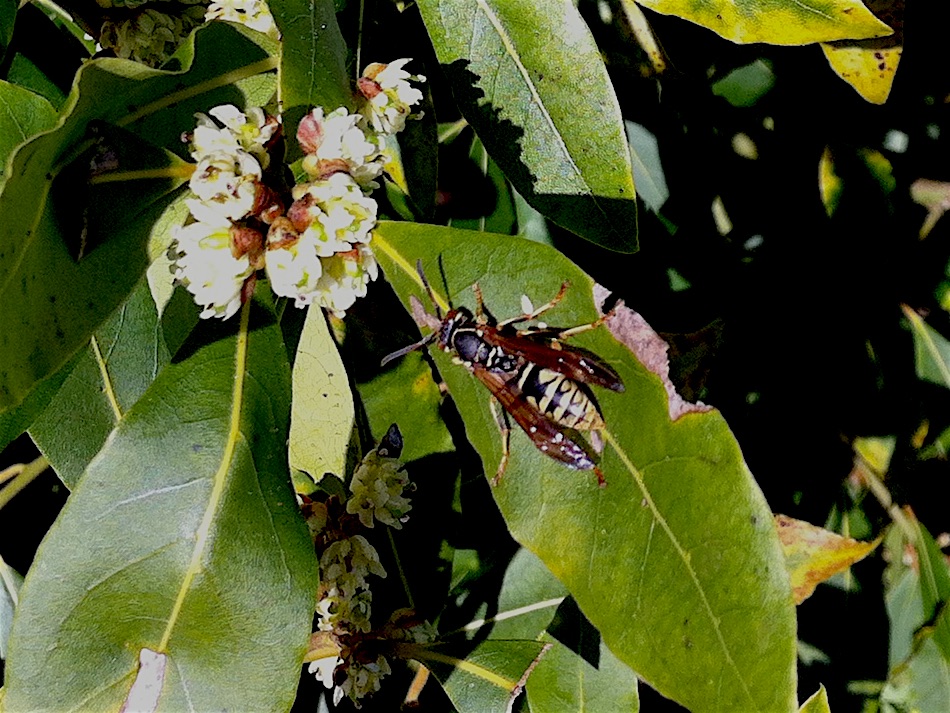NOTE: I have updated this 2015 post in order to make it appear closer to the other mason bee information
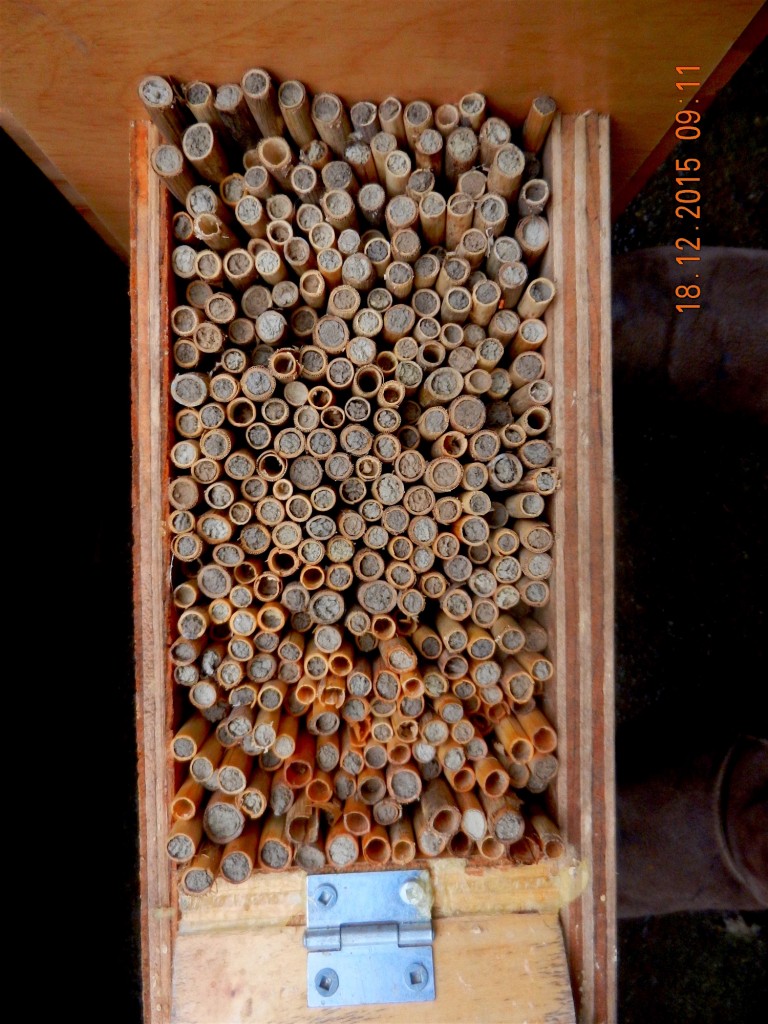
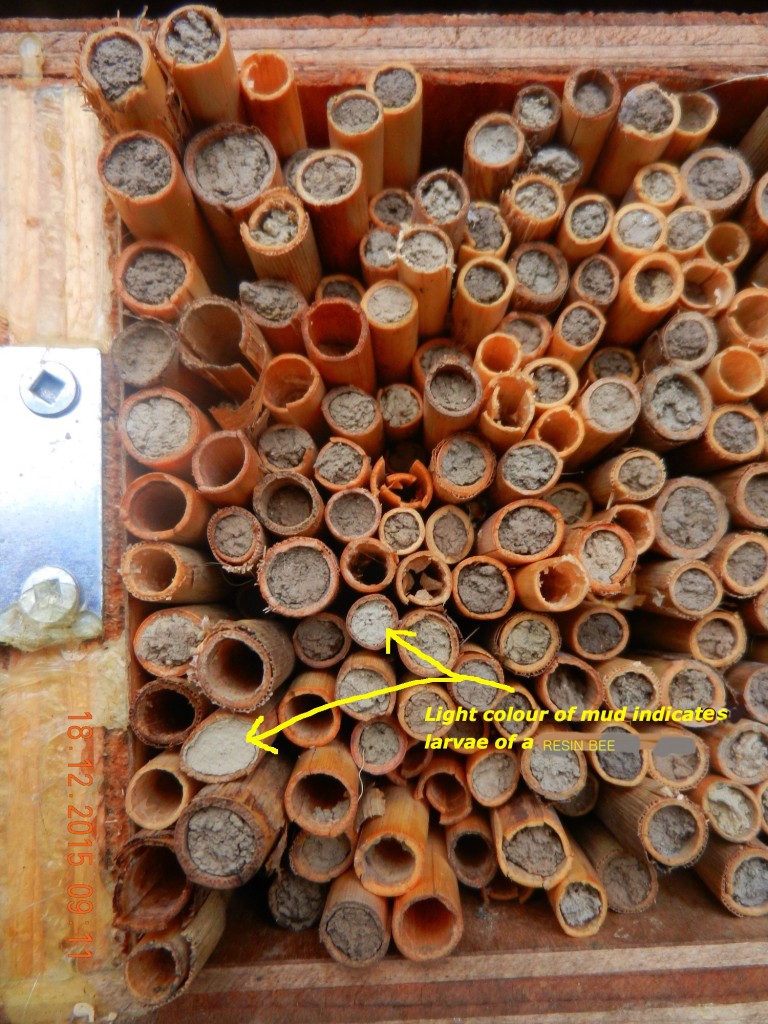 The photo above is of one of the better colonized box of tubes from the summer of 2015. Each mud-sealed tube in this box will contain on average 5 mason bee cocoons.
The photo above is of one of the better colonized box of tubes from the summer of 2015. Each mud-sealed tube in this box will contain on average 5 mason bee cocoons.
In the lower section of the box shown below, several mud plugs are of lighter colour and a smoother texture. I have found that these ones are colonized completely by another bee, I thought they may probably be resin bees , but now I have found out they are from the Subfamily Eumeninae (Potter and Mason Wasps):
See hatched bee/wasp images in May 1/2016 post: http://www.gfletcher.ca/?p=1538
When the tubes from several boxes which had the light coloured mud plugs were split open they appear as in the photo below.
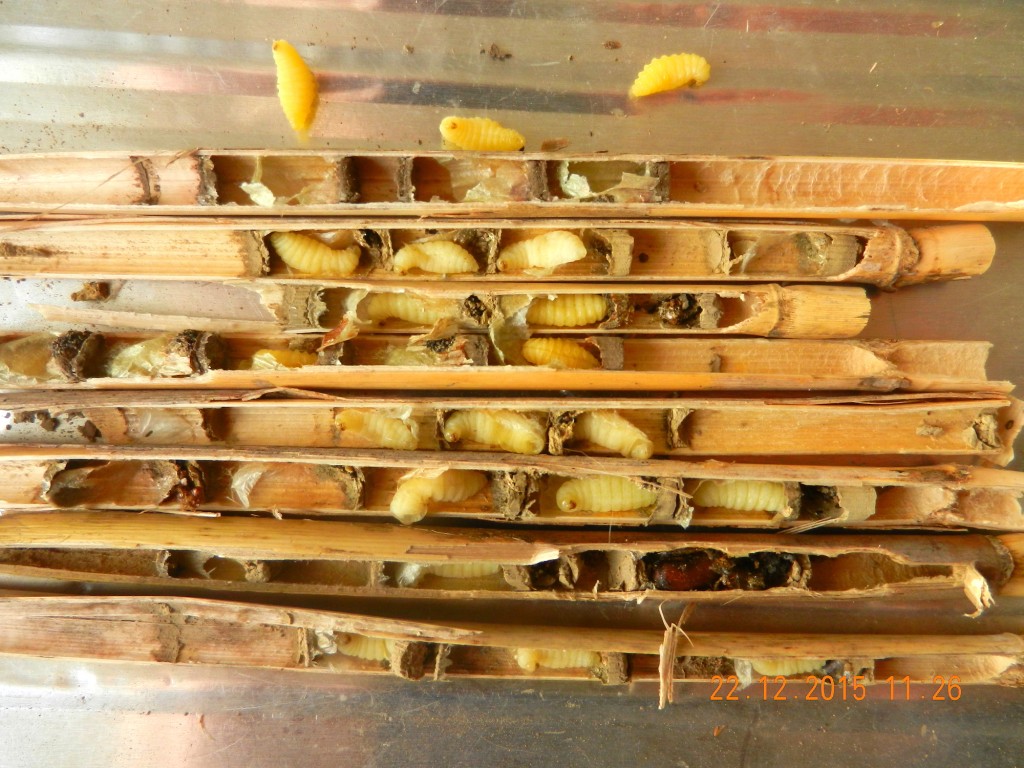
Other postings on parasites
NOTE: I have updated this 2015 post in order to make it appear closer to the other mason bee information
